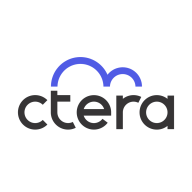


CTERA Enterprise File Services Platform and NetApp Cloud Volumes ONTAP are competing products in cloud and enterprise data management. Data comparison shows that while CTERA is favored for pricing and support, NetApp Cloud Volumes ONTAP is preferred for its extensive features that justify its cost.
Features: CTERA Enterprise File Services Platform is noted for secure endpoint management, hybrid cloud capabilities, and unified data access. NetApp Cloud Volumes ONTAP offers comprehensive data protection, storage management, and robust operations, essential for enterprise workloads.
Room for Improvement: CTERA may enhance its feature set to appeal to users needing extensive management tools and may focus on building broader data protection offerings. NetApp could improve by offering more cost-effective solutions for smaller enterprises and enhancing its hybrid cloud integration to match its on-premise capabilities.
Ease of Deployment and Customer Service: NetApp Cloud Volumes ONTAP offers flexible deployment and extensive customer service, easing integration into infrastructures. CTERA emphasizes quick scalability and strong support during a straightforward deployment process.
Pricing and ROI: CTERA Enterprise File Services Platform appeals with competitive pricing and fast ROI for cost-conscious organizations. NetApp Cloud Volumes ONTAP, though more expensive, matches its cost with advanced features, offering a richer feature set at a higher price, appealing to those interested in long-term investment returns.



IBM Turbonomic offers automation, planning, and right-sizing recommendations to streamline resource management, improve efficiencies, and optimize costs across virtualized environments and cloud platforms.
IBM Turbonomic is valued for its capability to optimize resource allocation and monitor virtual environments efficiently. It facilitates automated decision-making in VM sizing, load balancing, and cost optimization for both on-premises and cloud deployments. Users can leverage insights for workload placement, ensure peak performance assurance, and effectively right-size across VMware and Azure. The ongoing transition to HTML5 aims to improve visual and navigational ease, while expanded reporting features are anticipated. Opportunities for improved training, documentation, and integrations enhance platform usability and functionality.
What Are the Key Features?In finance, IBM Turbonomic aids in maintaining platform efficiency during market fluctuations. Healthcare organizations leverage its capability for resource optimization during high-demand periods to enhance patient care support. Retailers use it for planning in peak seasons, ensuring resources align with fluctuating demand to maintain performance continuity.
The CTERA Enterprise File Services Platform provides a cloud-native global file system over public and private object storage, revolutionizing the world of hybrid cloud data solutions. Enhanced by a rich data services ecosystem, CTERA enables enterprises to gain full control of their data for optimal edge performance, data insight, and governance. The platform focuses on security, providing features like data encryption, access controls, and ransomware protection. Centralized management tools enable efficient data control and monitoring. The platform is being used to replace legacy NAS and file servers, especially at remote locations, and simplify backup and disaster recovery of file data while providing the flexibility of multi-cloud deployments with infinite scalability. CTERA is at the core of hybrid cloud transformations of some of the world’s largest banks, healthcare organizations, global media groups, and government agencies, in deployments that scale to tens of petabytes.
NetApp Cloud Volumes ONTAP is an efficient storage management solution for managing and storing data in the cloud. It offers seamless integration with cloud providers, advanced data replication capabilities, and high data protection. With reliable performance, it is ideal for industries like healthcare and finance.
We monitor all Cloud Migration reviews to prevent fraudulent reviews and keep review quality high. We do not post reviews by company employees or direct competitors. We validate each review for authenticity via cross-reference with LinkedIn, and personal follow-up with the reviewer when necessary.